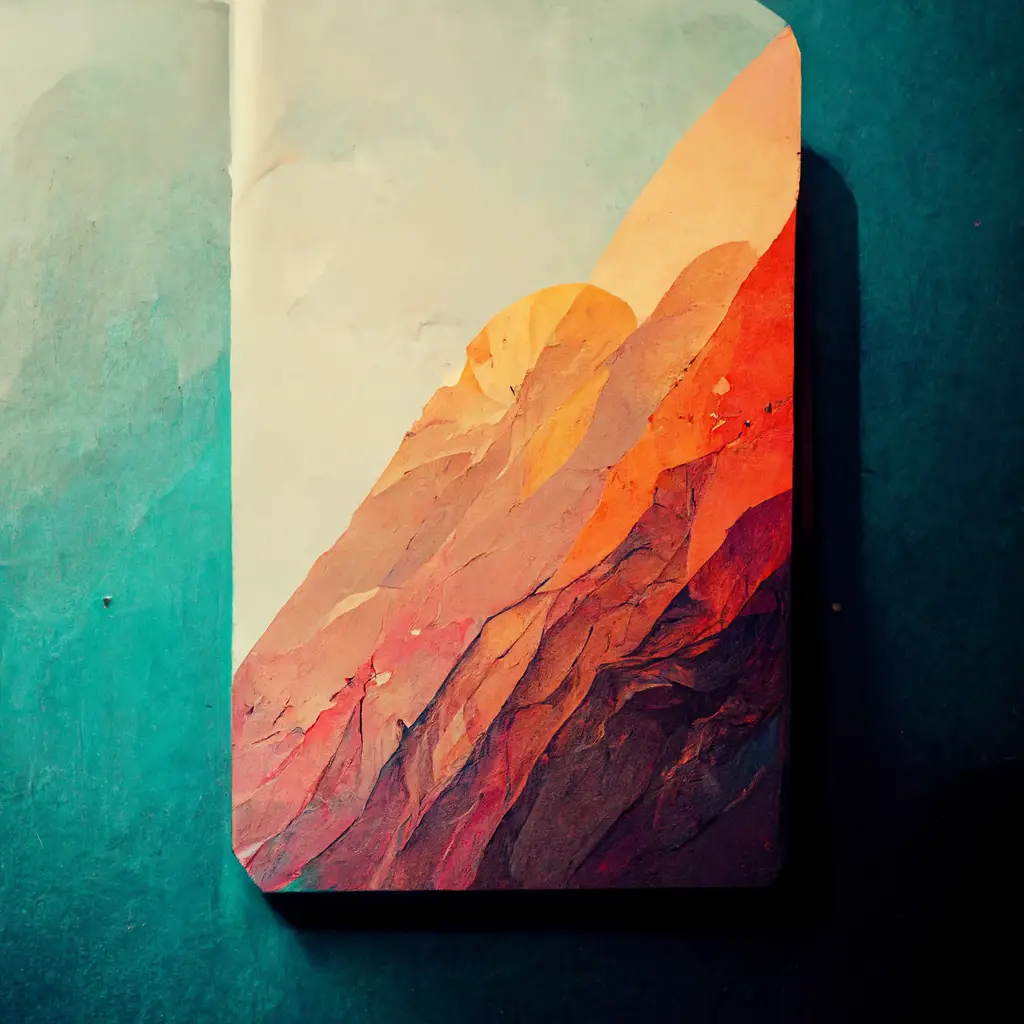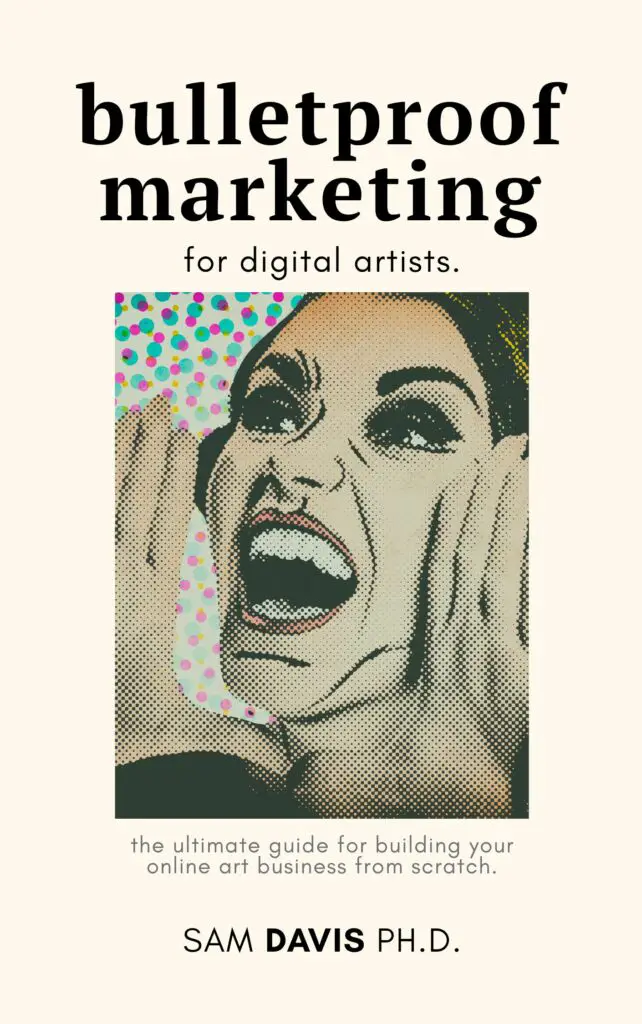An artist website portfolio is the most important tool an artist has to showcase their work and attract new clients. It's essential that you include all the necessary information in order to make a great impression on potential clients. In this blog post, we will discuss the 10 most important elements that portfolio websites should have!

1. Have a website
Yeah, it seems simple. But you'd be surprised at just how many artists don't have an online portfolio website that they can refer potential buyers to. Any artist or graphic designer worth their salt needs a great portfolio website to showcase their work.
If you don't have a website, you're missing out on a huge opportunity to reach new clients and build your brand. A website is the perfect platform to show off your work, list your services, and attract new clients. Plus, potential clients are much more likely to take you seriously if you have a professional website. So get building!
2. Use an easy to navigate website builder
It can be intimidating to build your online portfolio, but portfolio websites really aren't that hard to create. If you do feel intimidated, think about using a website builder to create your portfolio site. Website builders are easy to use and don't require any coding knowledge. Plus, they're relatively inexpensive and you can usually get started for free.
There are a lot of great website builders out there, so do some research and find the one that's right for you. Once you've built your site, it'll be time to start filling it with regular content updates via the blogging tools. It's easy – I promise.
3. Make your site responsive for mobile devices
More and more people are using their mobile devices to browse the internet. That means that it's essential for your website to be responsive, or able to adapt to different screen sizes. If your website isn't responsive, potential clients are likely to click away in frustration.
So how do you make sure your site is responsive? The best way is to rely on your template or website builder. Really. Most website builders nowadays are built to create responsible online portfolio websites. If you're worried about it, just visit your portfolio site on your phone or table to confirm that functionality is still good.
4. Use high quality images of your work
Your portfolio site is all about showcasing your work, so you need to use high-quality images. That means that you should avoid using low-resolution or watermarked images. If you do use watermarked images, make sure they are small and unobtrusive. The focus should be on your work, not on the watermark.
That being said, you do need to be concerned about site speed, especially if you're using a free, basic service. You want to make sure that your images are loading quickly. Look for a fast, responsive web server. Servers with unlimited storage may end up throttling your speed if your portfolio site is a data hog, so be sure to use high quality images at the smallest file size possible.
5. Write interesting and engaging descriptions of your artwork
Your portfolio site is not only about displaying your work – it's also about writing engaging and interesting descriptions of your artwork. Your portfolio site's descriptions should be compelling, accurate, and free of typos or grammatical errors.
Think about what makes your work unique and special. Why would someone want to purchase one of your pieces? What story are you trying to tell? You're showcasting your design portfolio in your own space, so don't be afraid to be verbose. It's your own website representing your own creative work. Be creative.
6. List prices for your artwork, or provide an inquiry form for interested buyers
If you're selling your artwork, you need to list the prices on your website. If you're not selling your artwork, you should still provide a contact form for interested buyers. At the very least, make sure that your contact information is listed prominently on your site.
You don't want to miss out on a sale because a buyer can't find you later. Your own portfolio is among the best marketing tools that you can use. Even free portfolio websites have a lot of benefits for the creative professionals that are using them.
7. Your contact information.
It's related to the above one, but it's really important. If I've seen a portfolio site without contact information, I've immediately moved on because I think they've moved on. Oh – and make sure your contact info is in text. Your graphic design might look cool, but people who use screen readers can't use them on flat images. So make sure that your information is copy/paste-able for your site visitors.
8. Links to social media accounts
If you want to be found, you need to be active on social media. So make sure that your portfolio site has links to all of your social media accounts. If you're not on social media, you should create accounts and start posting. It's essential for networking and building relationships in the design industry.
The best portfolio websites will mention the social media, but they will drive their site visitors to an email subscription list. Unlike on social media, the people who sign up from portfolio sites to an email list are wholly yours. You can email them monthyl with new art updates, you can run holiday specials, you can share your new work online – the sky is endless. With social media, you're at the mercy of the algorithms.
9. Your biography, headshot, and any links to news articles about you
Your portfolio site should have a page dedicated to you, the artist. This is where you'll put your biography, headshot, and any links to news articles about you. Portfolio websites, after all, are about you: the artist. Don't shy away from playing show and tell, and taking charge of your creative direction on your website. Even free portfolio websites have room for a page like this.
People want to know who they're buying from. They want to know your story and what drives you. So don't be afraid to share a little bit of personal detail on any portfolio sites you create. If you're having trouble, ask a graphic designer friend for help. They usually have good tips for your “About Us” page.
10. Video clips of your work in progress
Videos are a great way to show off your work process, and they're also interesting for people who want to see how you work. You can create time-lapse videos of you working on a project from start to finish, or you can create video clips that show different stages of your project. These are all perfect tools for portfolio websites.
This is more challenging for digital artists, but TikTok is perfect for creating short videos to complement online portfolio sites like yours. If you're not on TikTok, you should create an account and start posting videos. It's a great way to build an audience for your work.
Final thoughts about portfolio websites
There you have it! These are the ten essential elements of an artist portfolio website. Remember, your portfolio is an extension of your brand, so make sure that it represents you well.
If you're short on cash. There are options for free portfolio websites out there. For example, you get access to Adobe Portfolio with a Creative Cloud subscription, so you can skip all of the other fees associated with building a website.
Do you have any strong opinions about portfolio websites? Let us know in the comments!
